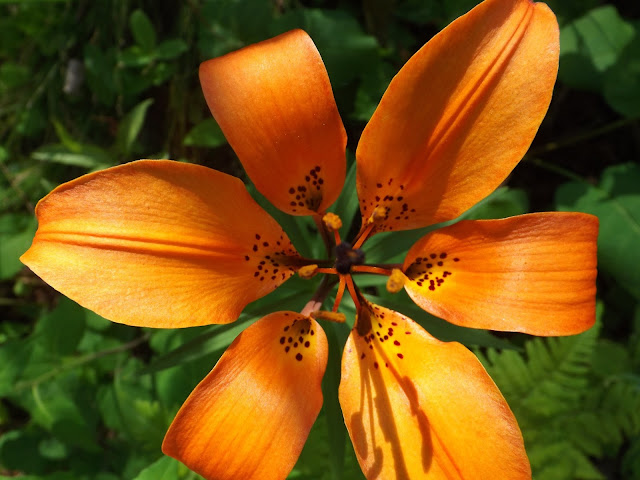 |
| L. philadelphicum specimen |
I consider this to be my 'specimen photo'. The anatomy of lilium philadelphicum is quite apparent here. I particularly love the richness of the gradation of colour from bright yellow to deep red. It is a spectacular wildflower. This specimen was growing in loamy soil at the edge of a clearing, in the shade of a stand of cedars. It gets the late afternoon sun (4hrs or so) in its location but the other specimens in the area appeared to be growing in the somewhat more shaded areas (less than 2hrs direct sunlight, but plenty of indirect or dappled sunlight).
Description of this plant available here: http://www.efloras.org/florataxon.aspx?flora_id=1&taxon_id=242101743
 |
| L. philadelphicum blossom |
The growth pattern of the plant (in threes and sixes) is particularly visible here. The six stamens, lined up with the six petals, and then the tripartite shape of the stigma (upper portion of the pistil, for trapping pollen), is particularly evident in this shot. I love how the points of the stigma are lined up with the three more deeply curled petals. You can also see, from this angle, the tubular section near the base of the petals (quite different, for example, from a day lily, which is of course closed at the base). The clear shadow cast by pistil and stamens is fun.
 |
| L. philadelphicum pistil and stamens |
And here we take a closer look at the pistil and stamens. I particularly love the way the pollen accumulated on the lens of the camera, resulting in that dappled, sparkly look. The anthers (pollen-producing parts at the tops of the six stamen) look rather like grains of wild rice to me, and the filaments (stalks on which the anthers are located) are beautifully coloured. You can see that the stigma's tripartite appearance from the top is the result of the intersection of three bulbous portions; the curved lower edges are visible from this angle.
No comments:
Post a Comment